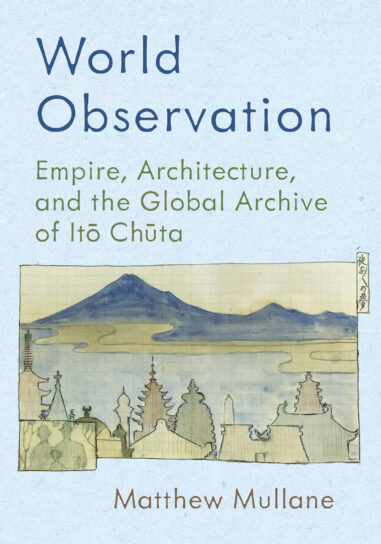
Hardcover $75.00
Request Exam or Desk Copy. Request Review Copy
World Observation
Empire, Architecture, and the Global Archive of Itō Chūta
Thanks to this deeply researched study, readers can at last gain a full and nuanced picture of twentieth-century scholar, architect, and pan-Asianist ideologue Itō Chūta. As Mullane demonstrates, Itō’s fascinating and eccentric body of work is equally important to our understanding of global architectural modernity as it is to the history of modern Japan.

